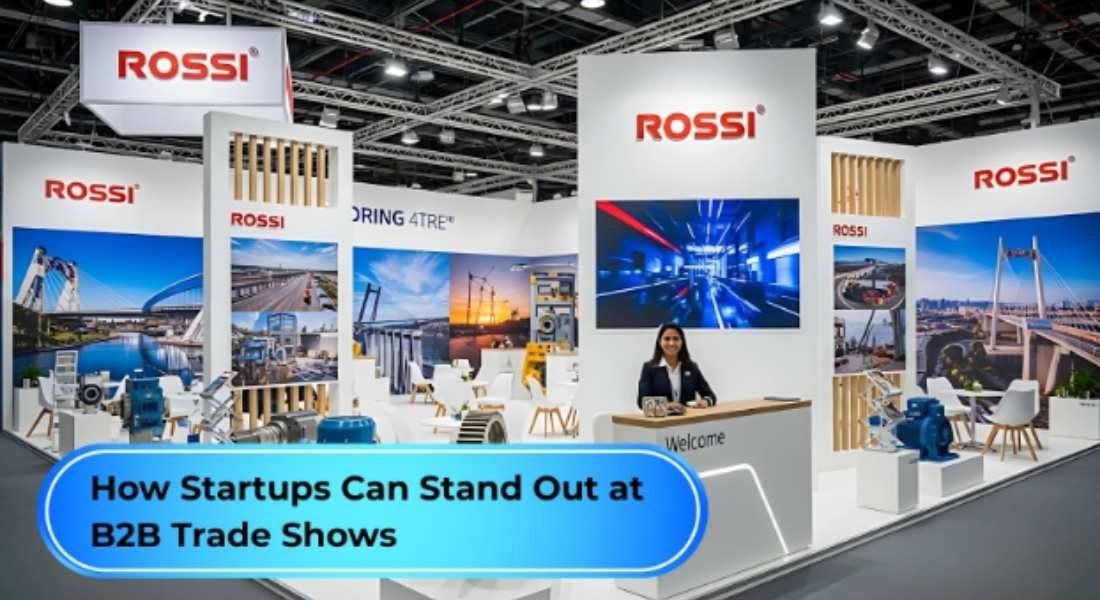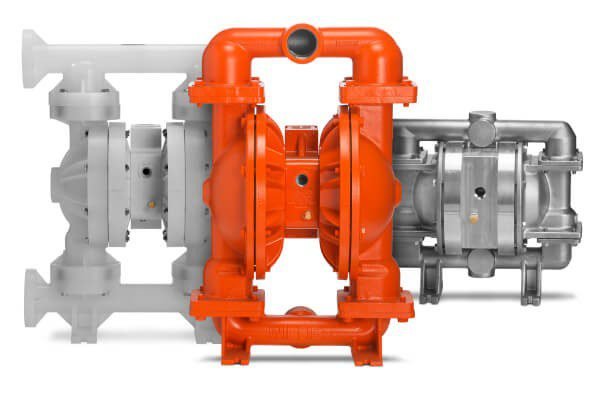Trade shows are a startup’s version of Shark Tank, but with less TV drama and more real business on the line. You are in a sea of seasoned brands with massive booths, marketing budgets and name recognition.
Meanwhile, you are the newbie, the underdog, the who is this? amongst who is who in the industry. But the truth is that’s your edge!
The B2B trade shows are about turning curiosity into conversations, and those conversations into leads, partnerships, or sales. They are about being intentional with your message, bold with your presence and smart with your resources.
In this guide, we’ll walk through how startups stand out at trade shows with actionable tactics, specific trade show growth hacks for startups, and real-world examples. This will be your comprehensive playbook to shine on the floor.
Why Should Startups Even Bother with Trade Shows?
Let’s answer the big question first: Why bother?
Meet Decision Makers Face to Face
You could spend months chasing a meeting with a Fortune 500 company or you could meet their procurement team casually while offering a coffee at your booth. The trade shows allow for meaningful, in-person conversations. Founders get to meet customers, investors, partners, and media, all under one roof.
Compete with the Big Guys
Trade shows are great equalizers. With a smaller budget, startups can capture attention with creativity, contradicting the assumption that size equals impact. A CEO of a bootstrapped company can be pitching face-to-face with a big shot in the industry.
Validate Real-World
Seeing how prospects react to your product in person is invaluable feedback. It guides your feature testing, and proof-of-concept in action.
Brand Momentum & Credibility
Here, the attendees can be a witness to your vibrant and energetic team. A firm handshake and confident demeanour can instill credibility in your brand. Ready to scale.
Pipeline Power
Seen from a marketing funnel perspective, trade shows compress discovery and engagement into days. Leads are captured, meetings are booked, and deals all closed well before the event ends.
These benefits overshadow any other marketing efforts by the startups.
Startup Stand-out at Trade Show Strategy: The Essentials
Here are the proven and effective startup trade show tips:
Choose the Right Event
Research well who all attend the trade show you are considering to participate in.
Not all trade events attract decision makers. Research well who all attend the trade show you are considering to participate in. Start with these questions:
- Are attendees core decision-makers (e.g., CTOs, VPs)?
- Does the show focus on early-stage innovation or your sector?
- What’s the audience size and exhibitor mix?
Look for shows with clear startup tracks or pitch events. These offer visibility and press coverage.
Following simple strategies can help you rise above the noise, even when you are the smallest player on the floor.
Set Your Goals & KPIs First
A trade show is a startup’s entry in the industry with a bang! But, it can be done only if goals are clearly defined and SMART: Specific, Measurable, Achievable, Relevant and Time-bound.
Establish what do you want to achieve there:
- Generate ‘n’ number of qualified leads?
- Build investor’s interest?
- Validate your product in a new market?
- Get media coverage or partnerships?
Once goals are set, everything else flows from that clarity.
For instance, for a goal of partnership, your team should have a person solely focused on spotting and chatting with potential collaborators.
Your Booth Isn’t Just a Space. It Is Your Brand Story.
How startups exhibit at trade shows is not about a massive setup and flashy lights. You can make an impression with clear messaging and creative display even on an open 10×10 footprint.
Modular Compact Booth Design:
Think portable, pop up booths with magnetic walls or fabric prints. They pack light, ship easy, and look smart with minimal cost.
Clear Messaging
Ask yourself: ‘If someone walks by my booth for 3 seconds, what will they understand?’
It should be a value addition your company provides to the visitors. A Good Booth Says:
“We solve this specific problem for this specific group of people.”
Given below are some examples:
Visual Storytelling
Let your booth tell your brand story:
- Keep the color palette aligned to your brand colors.
- Use screens and attention grabbing graphics to display main messaging, client testimonials.
- The new-age technology like AI, VR and AR provides more immersive and impactful experience in product demonstration and ‘on-site’ walkthroughs.
Pre-Event Buzz
Build the anticipation on social media and LinkedIn about your booth at the show.
What You Should Be Doing Weeks Before:
- Posting teasers and behind-the-scenes prep on LinkedIn and Twitter.
- Emailing existing contacts and inviting them to your booth.
- Booking meetings with prospects, VCs, or press attending the event.
Real Example: A founder attending SaaStr created a Calendly link for “15-min coffee chats” and shared it in a few SaaS founder groups. Within days, their calendar was full, and the booth became a hub of scheduled activity.
Don’t wait for traffic. Drive it.
Booth Staff Training and Strategies
Your booth staff are your brand ambassadors. They should wear an inviting and confident demeanor. Train them to:
- Deliver the pitch in 15 seconds
- Ask questions and listen
- Encourage demos and inquiries
Trade Show Growth Hacks for Startups
Here’s how to make a big splash on a startup budget:
Purposeful Branding
Skip the pens and keychains. Instead, offer:
- Branded water bottles
- Notebook with startup tips
- Discount code cards
Make sure your giveaway is something people keep and associate with your solution.
Interactive Experience
Simple games like spin wheels, trivia, or digital raffles can turn your booth into a magnet. Once traffic is on your floor, use the opportunity to send across your message in simple language.
Host Micro-Meetups or Coffee Chats
Schedule coffee chats or product previews with select attendees. These personalized interactions build credibility, foster deeper engagements and conversations and often lead to high-quality business connections.
Leverage Thought Leadership
Secure a spot for your founder or product manager to speak at a panel or lightning talk. These small talks give a sneak-peek to your startup and can position it as an industry authority. This impact outlasts the trade show.
Create One Memorable Moment
Your aim is to be memorable. Think of a takeaway that you want your visitors to be imprinted with.
Ideas That Work:
- Micro-demo challenges: “Can we automate your workflow in 2 minutes? Let’s try.”
- Product-powered giveaways: “Scan your badge and get a free 1-month license.”
- Real-time feedback wall: Let visitors share their pain points with sticky notes and show how you solve them.
Post-Show Follow-Up: Don’t Let Leads Go Cold
B2B startup trade show strategy does not end as the curtain draw at the event, the real magic often happens after that. Your primary task is leverage on the data you have gathered at the trade show.
Follow Up Within 48 Hours
Segment your leads into hot, warm or cold, based on their interest in your startup. Use personalized emails based on your booth conversation.
For instance, “Great talking about your logistics challenge. Here’s that case study I mentioned. Let’s schedule a follow-up?”
Track Conversions
Based on the goals of your trade show, now it’s time to assess your achievements and measure ROI.
Use your CRM or sales platform to properly tag leads sourced from the event.
Key metrics to track include:
- Demo Requests: Who scheduled or completed a post-show product demo?
- Email Engagement: Monitor open rates, click-throughs, and replies from follow-up emails.
- Sales Qualified Leads (SQLs): How many event leads converted into real opportunities?
These insights help refine future trade show strategies and maximize return on investment.
You Don’t Have to Be Big to Make a Big Impression
Trade shows are about who connects the best, it can be a big shot or a new fish in the industry.
With sharp messaging, high-energy staffing, creative touchpoints, and clear goals, startups stand out at trade shows in meaningful and memorable ways.
Be confident and own your space and make it count.









